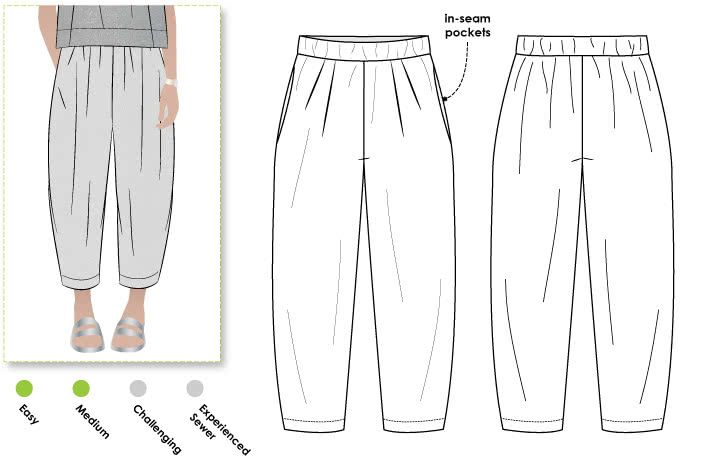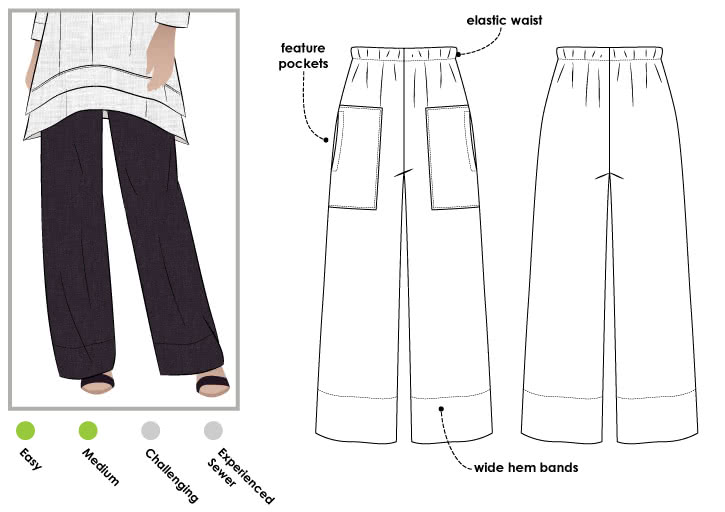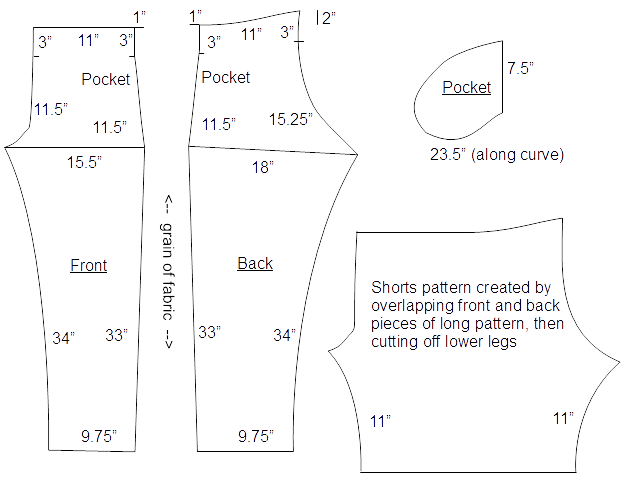
Introduction
Creating your own pants can be a rewarding and fulfilling experience. Sewing your own pants allows you to customize the fit, style, and fabric choice according to your preferences. Whether you are a beginner or an experienced seamstress, having a good sewing pattern is crucial to ensure a successful outcome. In this article, we will explore the world of pants sewing patterns and offer some helpful tips to get you started.
Choosing the Right Pattern
When selecting a pants sewing pattern, it's important to consider your skill level, body shape, and personal style. Patterns come in a variety of sizes, ranging from petite to plus-size, and different styles such as straight-leg, wide-leg, or flared. Take your measurements accurately and compare them to the pattern's size chart to ensure the best fit.

Understanding the Pattern
Before diving into the sewing process, familiarize yourself with the pattern instructions. Read through each step carefully, noting any special techniques or terminology. Make sure you understand how to cut the fabric pieces, transfer markings, and assemble the pants. It's also helpful to study the included illustrations or diagrams to visualize the construction process.

Gathering the Materials
Once you have chosen your pattern, it's time to gather the necessary materials. The fabric choice is crucial and can greatly impact the final result. Consider the drape, weight, and stretch of the fabric based on the desired style of pants. Additionally, you will need matching thread, a sewing machine, scissors, pins, and any other notions mentioned in the pattern instructions.

Preparing the Fabric
Before you start cutting your fabric, it's essential to prewash and press it. This step ensures that any shrinkage or color bleeding occurs before the construction process. Follow the fabric care instructions to avoid any mishaps. After washing and drying, iron the fabric to remove any wrinkles or creases, allowing for accurate cutting and sewing.

Layout and Cutting
Lay out your fabric on a clean, flat surface. Carefully arrange the pattern pieces according to the layout guide provided in the instructions. Pay attention to the fabric's grainline and any directional prints. Pin the pattern pieces securely to the fabric and use sharp fabric scissors to cut along the designated lines. Take your time and cut accurately to ensure precise fitting pants.

Markings and Notches
After cutting the fabric, transfer any markings or notches from the pattern to the fabric pieces. These markings indicate important points for matching seams, pockets, darts, or pleats during assembly. You can use tailor's chalk, marking pens, or tailor's tacks to make these indications. Take care not to press too hard or use a permanent marker that could leave visible marks on the finished garment.

Constructing the Pants
Follow the pattern instructions step by step to construct your pants. This typically involves sewing darts, pockets, waistbands, and inseams. Pay attention to seam allowances, stitching techniques, and pressing instructions. Take your time and sew carefully to ensure neat and professional-looking seams. Try the pants on periodically to check the fit and make any necessary adjustments.

Finishing Touches
Once the main construction is complete, it's time to add the finishing touches. This may involve sewing a zipper or buttons, hemming the pants, or adding any desired embellishments. Follow the pattern instructions for these final steps, as they may vary depending on the style and design of your pants. Take your time and sew with precision to achieve a polished and professional finish.

Fit and Adjustments
After completing your pants, try them on and assess the fit. If you encounter any fit issues such as tightness, looseness, or length discrepancies, you may need to make adjustments. Common adjustments include taking in or letting out seams, shortening or lengthening the hem, or modifying the waistband. Remember that each body is unique, and minor alterations may be necessary to achieve the perfect fit.

Additional Tips
Here are a few additional tips to enhance your pants sewing experience:
- Practice on scrap fabric or make a muslin test garment to ensure the fit and make any necessary adjustments before cutting into your desired fabric.
- Experiment with different fabrics and prints to create a variety of pants that suit your style and occasion.
- Consider adding pockets or other design elements to personalize your pants.
- Join online sewing communities or forums to seek advice, share ideas, and gain inspiration from fellow sewing enthusiasts.
Conclusion
Sewing your own pants can be a fulfilling and rewarding endeavor. With the right pattern, materials, and techniques, you can create pants that fit perfectly and reflect your personal style. Take your time, follow the instructions carefully, and don't be afraid to make adjustments along the way. Enjoy the process of sewing and embrace the satisfaction of wearing pants that are uniquely yours!